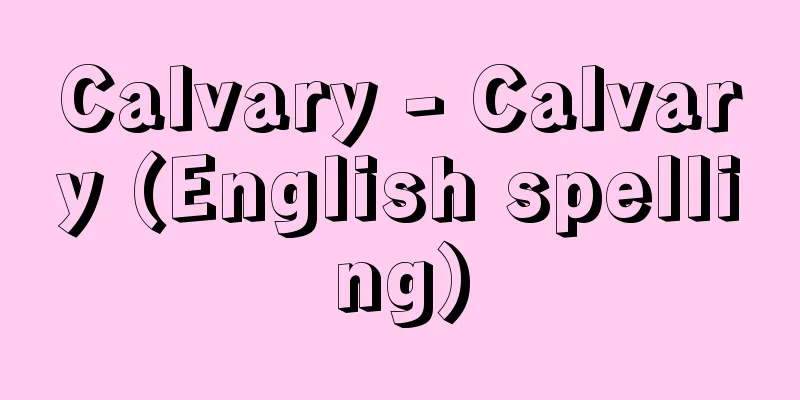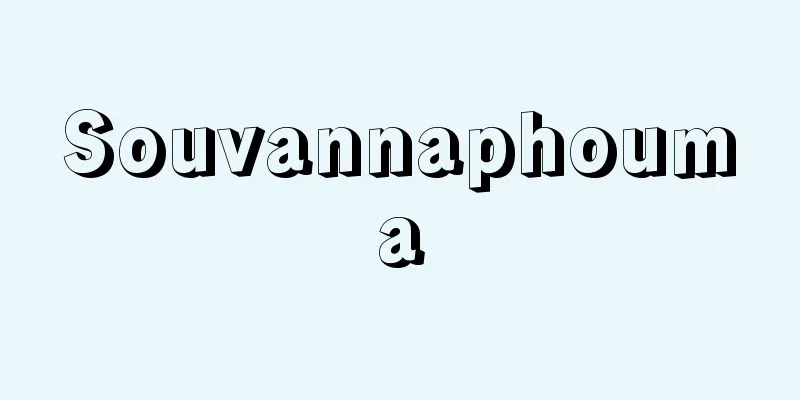Inui Tomiko

|
Children's literature author. Her real name was Inui Tomiko. She was born in Tokyo. She dropped out of Japan Women's University and graduated from Heian Jogakuin. She worked at a nursery school in Omori, Tokyo, and later in Yanai Town, Yamaguchi Prefecture (now Yanai City). She began writing shortly after the Second World War, and in 1950 (Showa 25), she joined the Newcomers' Group of the Japan Association of Children's Writers, where she founded the coterie magazine Mame no Ki (Beanstalk) with Sato Satoru, Nagasaki Gennosuke (1924-2011), and Kobe Junkichi (1920-). She joined Iwanami Shoten in the same year (she left the company in 1970). As an editor of children's literature, she was influenced by Western children's literature, and attracted attention for her fantasy fairy tales that rejected Japan's traditional childishness and advocated that even young children should struggle with reality and grow on their own. In 1954, she won the Japan Association of Children's Writers Newcomer's Award for her work Tsugumi (Thrush). Her main works include "A Long, Long Story of the Penguin" (1957, Mainichi Publishing Culture Award), "The Little People in the House in the Shade of a Tree" (1959), "Mooshika Meesika of the North Pole" (1961), "The Sky of the Seagull" (1965, Noma Children's Literature Award), "The Little People in the Dark Valley" (1972), and "The Day the Light Disappeared" (1978). She continued to write "Ayumi and her Secret Friend" (1979), "A Fantasy on a Snowy Night" (1981), "The Apprentice Mountain Nun's Daughter" (1982, Akaitori Literature Award), "The Postman Goes to Mount Sakuta" (1983), and the trilogy "The Story of the Swan Twins" (1986), all of which are humane works that awaken social consciousness. In addition to the above literary awards, he received the Hans Christian Andersen Award Japan Prize for "The Little People in the Shade of the Tree," the same award's Honorable Mention for "Mooshika-mishka of the North Pole," and the Roadside Stone Literature Award in 1987 for "The Day the Light Disappeared" and "The Story of the Swan Twins." He died of pneumonia in January 2002. [Nishimoto Keisuke] "The Polar Bear Flying in the Sky" (1963, Komine Shoten) "The Mountain Nun and the Flying White Horse" (1976, Fukuinkan Shoten) "Lila and the Birch Journey - Children's Literature and Me" (1977, Rironsha) "The Day the Light Disappeared" (1978, Iwanami Shoten) "Thrush" (included in Outlook: Japanese Children's Literature, edited by Ofuji Mikio, 1978, Sobunsha) "Ayumi and Her Secret Friend" (1979, Iwanami Shoten) "Fantasy on a Snowy Night" (1981, Doshinsha) "The Mountain Nun's Apprentice Daughter" (1982, Fukuinkan Shoten) "The Postman Goes to Mount Sakuta" (1983, Rironsha) "The Tale of the Swan Twins 1 Yuki, Kirara and the Seven Swans, The Swan Twins' Tale 2: Yuki's Adventure and Honoka's Song, The Swan Twins' Tale 3: Little Nana and the Witch Glass (1986, Rironsha) ▽ What Connects Children and Books (1987, Shobunsha) ▽ Jingu Teruo, Conversations with Contemporary Children's Literature Authors 6: Inui Tomiko, Kamizawa Toshiko, and Matsutani Miyoko (1990, Kaiseisha) ▽ Okada Junya, The Appeal of Children's Books -- From Miyazawa Kenji to Awa Naoko (1992, KTC Chuo Publishing) ▽ The Dwarfs of the Dark Valley and The Dwarfs of the House in the Shade of the Trees (Fukuinkan Bunko) ▽ The Long, Long Story of Penguins (Iwanami Children's Library) ▽ "Mushikamishika of the North Pole" (Rironsha, Four Bunko) ▽ "Sky of the Sea Cat" (Kadokawa Bunko) [Reference] |Source: Shogakukan Encyclopedia Nipponica About Encyclopedia Nipponica Information | Legend |
|
児童文学作家。本名乾富子。東京生まれ。日本女子大学中退、平安女学院卒業。東京・大森、のちに山口県柳井町(現、柳井市)で保育園に勤める。第二次世界大戦後しばらくして創作を始め、1950年(昭和25)日本児童文学者協会新人会に入り、佐藤さとる、長崎源之助(1924―2011)、神戸淳吉(かんべじゅんきち)(1920― )らと同人誌『豆の木』を創刊。同年岩波書店に入社(1970年退社)。児童文学の編集者として西欧の児童文学の影響を受け、わが国の伝統的な童心主義を排除し、幼児であっても現実と闘い、自ら成長していくべきとするファンタジー童話によって注目された。1954年『ツグミ』で日本児童文学者協会新人賞を受賞。おもな作品に、『ながいながいペンギンの話』(1957。毎日出版文化賞)、『木かげの家の小人たち』(1959)、『北極のムーシカミーシカ』(1961)、『うみねこの空』(1965。野間児童文芸賞)、『くらやみの谷の小人たち』(1972)、『光の消えた日』(1978)などがある。その後も、『あゆみとひみつのおともだち』(1979)、『雪の夜の幻想』(1981)、『山んば見習いのむすめ』(1982。赤い鳥文学賞)、『ゆうびんサクタ山へいく』(1983)、三部作『白鳥のふたごものがたり』(1986)と書き継いできたが、いずれも社会的意識に目覚めたヒューマンな作品である。なお上記文学賞のほかに、『木かげの家の小人たち』で国際アンデルセン賞国内賞を、『北極のムーシカミーシカ』で同賞佳作賞を受賞、『光の消えた日』と『白鳥のふたごものがたり』が、1987年度路傍の石文学賞を受賞するなど受賞多数。2002年(平成14)1月肺炎のため死去。 [西本鶏介] 『『白クマそらをとぶ』(1963・小峰書店)』▽『『山んばと空とぶ白い馬』(1976・福音館書店)』▽『『リラと白樺の旅――児童文学とわたし』(1977・理論社)』▽『『光の消えた日』(1978・岩波書店)』▽『『ツグミ』(大藤幹夫編『展望 日本の児童文学』所収・1978・双文社)』▽『『あゆみとひみつのおともだち』(1979・岩波書店)』▽『『雪の夜の幻想』(1981・童心社)』▽『『山んば見習いのむすめ』(1982・福音館書店)』▽『『ゆうびんサクタ山へいく』(1983・理論社)』▽『『白鳥のふたごものがたり1 ユキとキララと七わの白鳥』『白鳥のふたごものがたり2 ユキのぼうけんホノカのうた』『白鳥のふたごものがたり3 ちいさいナナと魔女ガラス』(1986・理論社)』▽『『子どもと本をむすぶもの』(1987・晶文社)』▽『神宮輝夫著『現代児童文学作家対談6 いぬいとみこ・神沢利子・松谷みよ子』(1990・偕成社)』▽『岡田純也著『子どもの本の魅力――宮沢賢治から安房直子まで』(1992・KTC中央出版)』▽『『くらやみの谷の小人たち』『木かげの家の小人たち』(福音館文庫)』▽『『ながいながいペンギンの話』(岩波少年文庫)』▽『『北極のムーシカミーシカ』(理論社・フォア文庫)』▽『『うみねこの空』(角川文庫)』 [参照項目] |出典 小学館 日本大百科全書(ニッポニカ)日本大百科全書(ニッポニカ)について 情報 | 凡例 |
Recommend
Acetonemic vomiting
...It is described as a disease seen in children ...
ÖVP (English spelling)
...Alongside referendums, national petitions (Vol...
Food - E
〘noun〙① Food to be given to birds, beasts, insects...
Vacuum drying - Shinkuukansou (English spelling) Vacuum drying
This refers to drying materials that are heat sen...
Menelik [II] - Menelik
Emperor of Ethiopia (reigned 1889-1913). Became Ki...
Nakatomi Toshiyuki - Nakatomi's thoughts
[Noun] The words performed by the Nakatomi clan on...
Liberal League
...They recognized the unification of the British...
Local infiltration anesthesia
...Reversibly blocking a portion of the periphera...
Ghost story - Kaidan
[1] (noun) A mysterious story. A suspicious story....
Antlion - Antlion (English spelling)
The larvae of an insect of the family Antlionidae....
Pitney, J. (English notation) PitneyJ
...An island jutting out into the Atlantic Ocean ...
Eumeces marginatus (English spelling) Eumeces marginatus
…[Hiroshi Aramata]. … *Some of the terminology th...
Qadi Al-Askar
...Qualifications for appointment required that t...
Twa
→Trans World Airlines [company] Source : Heibonsha...
Kasanori (umbrella seaweed) - Kasanori (English spelling) Mermaid glass
A beautiful green alga of the family Porphyraea (i...









